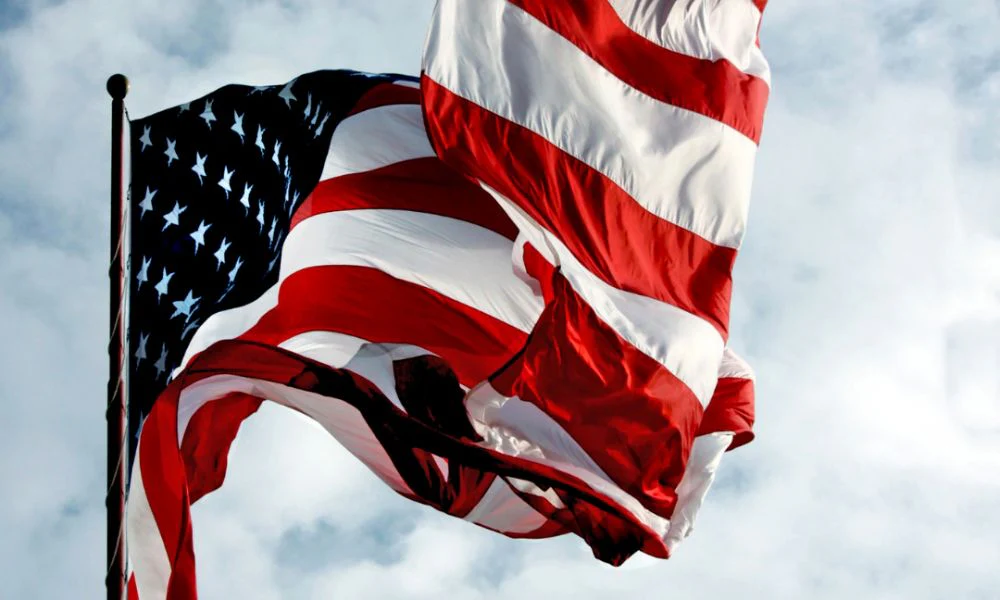The American flag is a powerful emblem, embodying the history, unity, and pride of the United States. But what happens when a flag becomes too worn to display? Many people hold onto faded, frayed flags, unsure of the correct way to retire them. This guide will walk you through respectful methods for disposing of the American flag, ensuring that it’s retired with the dignity it deserves.
Why Proper Flag Disposal Matters

The American flag is more than a symbol—it’s a representation of the sacrifices made for freedom and the ideals that define the country. Respectful disposal pays tribute to its meaning, upholding the flag’s dignity and honoring those who served under it. Simply tossing the flag in the trash isn’t an option; instead, retiring the flag respectfully shows reverence for the values it represents.
When is it Time to Retire a Flag? Recognizing the Signs
Flags should be retired when they’re no longer fit for respectful display. Knowing when a flag is ready for retirement is important, and there are a few signs to look for:
- Fading: If the red, white, and blue are no longer vibrant, it may be time to retire the flag.
- Tearing or Fraying: Frayed or ripped edges beyond repair indicate the flag is worn.
- Staining: If stains cannot be removed, the flag may not be suitable for display.
If your flag shows any of these signs and cannot be restored, it’s time to retire it with respect.
Traditional Methods for Flag Retirement
There are a few established methods for respectfully retiring an American flag. These practices honor the flag’s symbolic significance, ensuring that it’s laid to rest with the reverence it deserves.
1. Burning: A Time-Honored Tradition
Burning is the most traditional and widely recognized method for flag disposal. When done respectfully, it’s a solemn way to retire an American flag and is recommended by the U.S. Flag Code.
- Preparation: Choose a safe location for the ceremony, such as a fire pit or other open area. Ensure compliance with local fire regulations and safety measures.
- Execution: Carefully unfold the flag, place it gently into the fire, and let it burn completely. Those present may observe a moment of silence, offer a salute, or recite the Pledge of Allegiance.
- Safety: Have a fire extinguisher or water source nearby to ensure safety during the burning process.
Burning the flag in a respectful ceremony allows it to be retired in a way that upholds its honor.
2. Attending a Flag Retirement Ceremony

Many organizations, including the American Legion, Boy Scouts of America, and Veterans of Foreign Wars (VFW), hold flag retirement ceremonies. These events offer a dignified, communal way to honor flags that are ready for retirement.
- Ceremony Details: These ceremonies typically include a presentation about the flag’s importance, followed by a formal burning of the flag.
- Participation: Anyone can attend these events, and participants are encouraged to bring their flags for disposal. Attending such a ceremony fosters a shared sense of respect and pride.
Participating in a flag retirement ceremony allows individuals to retire their flags while feeling connected to others who value the symbol’s meaning.
3. Flag Disposal Boxes and Drop-Off Locations

Many communities provide flag disposal boxes or designated drop-off sites for those who wish to retire their flags respectfully but lack the resources to conduct a burning ceremony. Common locations include:
- Veterans’ organizations
- Fire stations
- Scout troop headquarters
By dropping off the flag at these locations, you can be assured it will be disposed of with honor. This is a convenient and respectful option for those unable to hold their own ceremony.
Creative and Sustainable Flag Disposal Options
While burning and ceremonies are traditional, there are alternative methods for respectfully retiring the flag, allowing it to serve a purpose even after its initial display.
Repurposing Old Flags
If sections of the flag remain in good condition, consider repurposing them. Here are some ideas:
- Quilts or Wall Art: Sew the stars or stripes into a patriotic quilt or frame them as art.
- Memory Projects: Create a commemorative display to preserve the flag’s legacy in a new form.
Repurposing allows the flag to continue as a symbol of patriotism, giving it a lasting presence in a unique, creative way.
Recycling Flag Materials

Recycling is an eco-friendly way to dispose of flags made of materials like nylon, polyester, or cotton. Some textile recycling centers and veteran organizations accept flags, ensuring they’re repurposed sustainably.
- Nylon and Polyester: These synthetic materials can be melted down and reused.
- Cotton: Cotton flags can be processed into new fibers, supporting sustainable practices.
Recycling ensures that the flag’s materials contribute to a new purpose without compromising its dignity.
Getting Assistance from Flag Disposal Organizations
If you’re uncertain about how to proceed, organizations such as the American Legion, Veterans of Foreign Wars (VFW), and local Scout troops can offer guidance. Many of these groups conduct flag retirement ceremonies and accept flags for proper disposal.
- American Legion: They frequently host ceremonies and provide guidance on flag disposal.
- VFW: They accept flags and offer community events for their retirement.
- Scout Troops: Local Scout troops often retire flags as part of their service, providing an accessible and respectful option.
These organizations serve as valuable resources for proper flag disposal, ensuring each flag is treated with honor.
Common Mistakes to Avoid in Flag Disposal
While respectful flag disposal is crucial, there are common mistakes to avoid:
- Throwing the Flag in the Trash: Discarding the flag in the trash is disrespectful and goes against flag etiquette.
- Improper Burning: If you choose to burn the flag, do so solemnly and with care, not casually.
- Partial Disposal: Ensure the entire flag is disposed of; partial disposal can be viewed as disrespectful.
By avoiding these mistakes, you uphold the flag’s dignity and respect its symbolic value.
Conclusion: The Importance of Respectful Flag Retirement
Disposing of an American flag with respect isn’t just a procedural task; it’s a way to honor the values, sacrifices, and history it represents. Whether through burning, attending a ceremony, repurposing, or recycling, the goal is always to retire the flag with dignity. Following these respectful methods ensures that the flag’s legacy endures, embodying the principles of unity, freedom, and pride.
Proper flag disposal is a meaningful act, allowing us to reflect on the nation’s heritage and pay tribute to those who have served under the stars and stripes.


